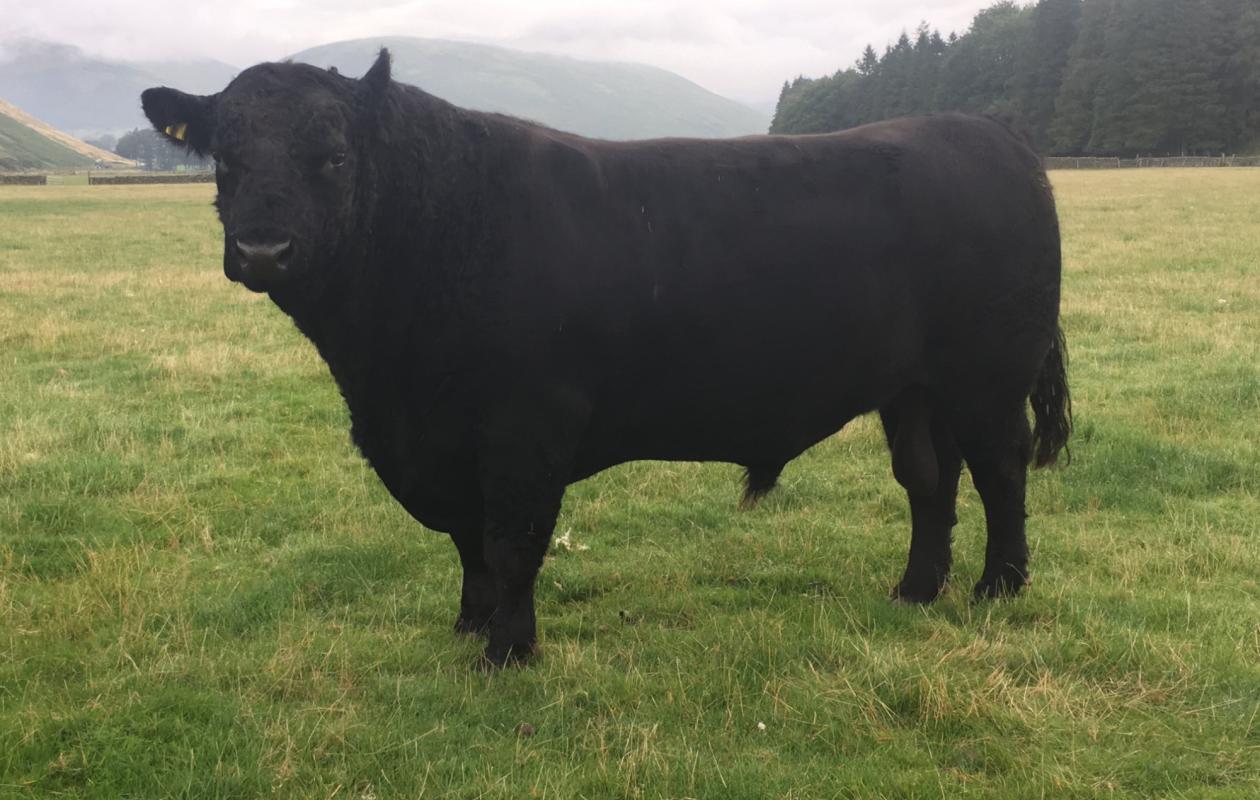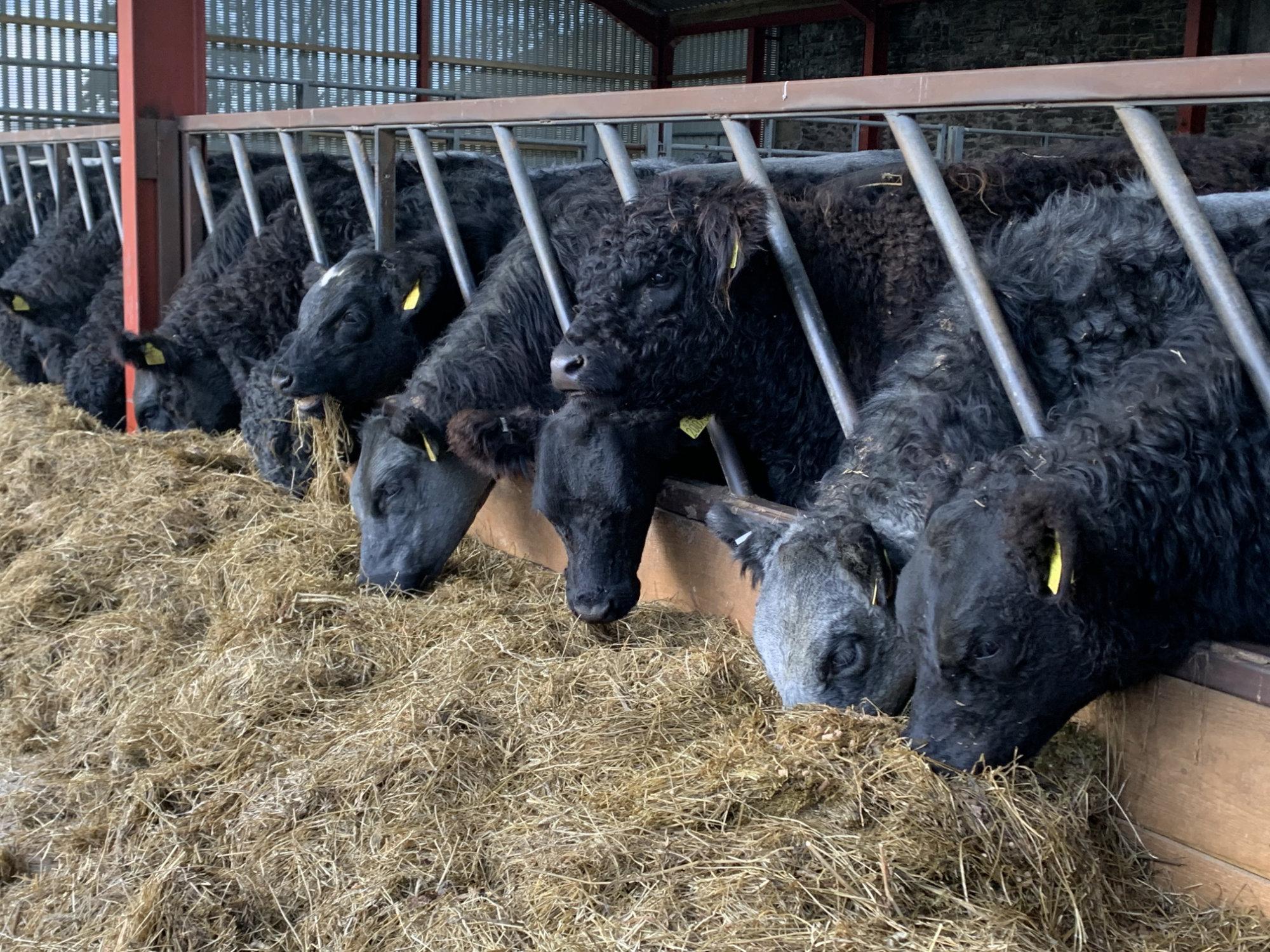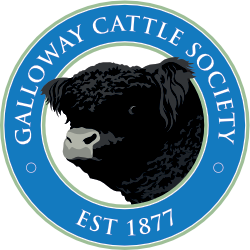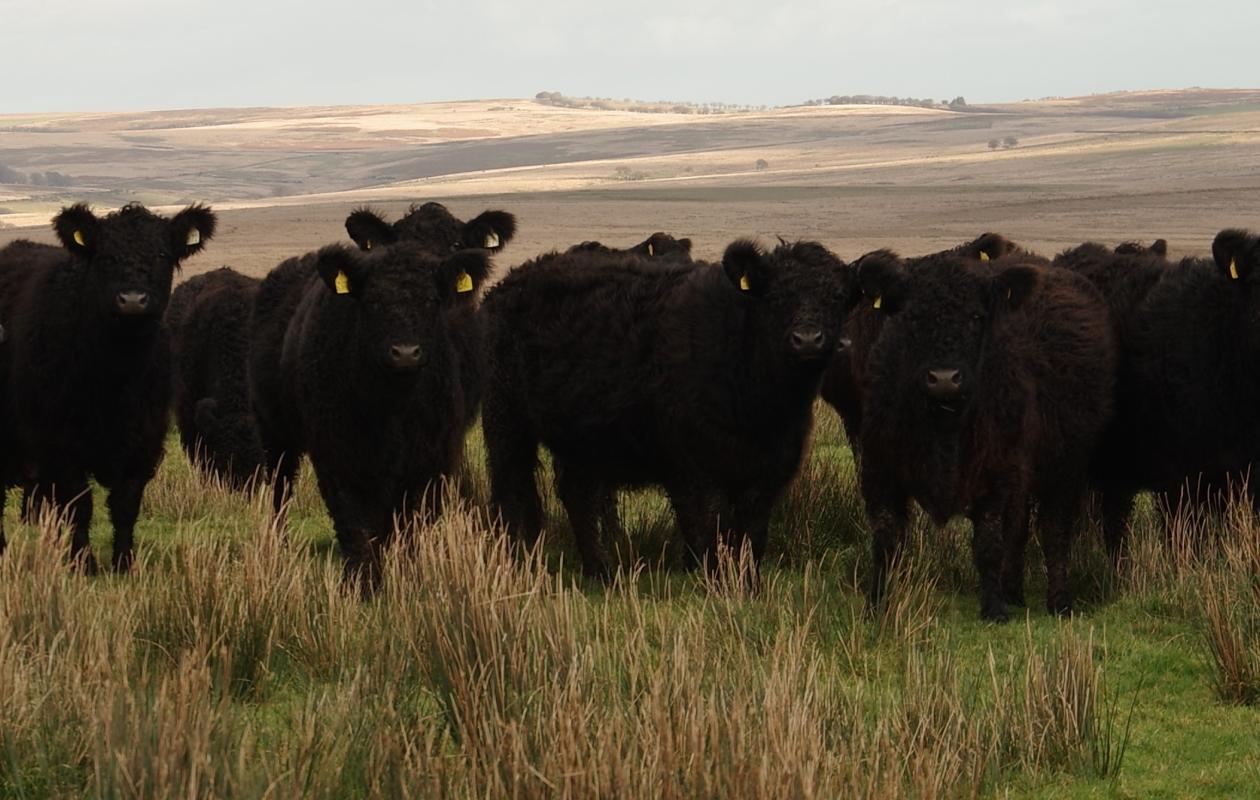Unthank ‘s number has obviously come out of the secretary’s bag for an article this year, so armed with a brief questionnaire and general guidance advice, ‘as long as you like’, I’ll describe what we do, why we do it and the potential future our Galloway cattle might have in a world dominated by efficiency, trees and carbon audits. I’ll start with the traditional description of the farm and our methods and end with a summary of our experience in weighing and ranking cattle.
The farm lies in the Ewes valley north of Langholm and was bought by my father in 1966. It extends to 1800 acres of which all but 70 acres are steep hill rising from 300 to 1650 feet. Rainfall averages 65 inches a year and Dad made hay every year until 1985 which may explain his occasional bouts of bad temper. He was a new entrant to farming and took local advice to stick with the local farming model, his 900 South Country Cheviots and 20 Galloway cows proving more resistant to a worsening climate than his hay making efforts.

I took over in 2001 in the emptiness following the foot and mouth cull, the arbitrary nature of the cull taking our sheep but leaving the cows. In the last nineteen years we have restocked with 900 Cheviots and expanded the Galloway herd to 50 registered pedigree cows. The business has taken on two neighbouring farms, Arkleton and Meikledale, under contract farming agreements which enabled us to access hill grazing for our extra cows while I have taken on a wife and a tenanted arable farm 25 miles away in the Borders which gives us an extra 70 acres of old grass for grazing young stock. The hill enterprise based on Unthank is managed by Brian Kennedy, assisted by his daughter Alison and stockman Ben Douglas. In addition to our own stock on Unthank they look after 90 suckler cows and 1200 hill ewes on Arkleton and Meikledale. The pros and cons of contract farming could fill an entire article on their own but we have been able to build an excellent relationship with the Knott family which has seen both sides commit themselves to the long term success of the farms and reap the benefits in a way that rewards both parties.
Spreading fixed costs over a larger enterprise can improve profitability but stretching people also has a cost and as a result we have increasingly simplified systems on the contracted farms. All lambs are sold store in the autumn, cows are calved outside in May/June and the offspring are sold store at 10-18 months. The existing Luings are being replaced by easier cared for home bred Blue Greys and are now wintered for 4 months of the year on the arable farm. The comparison between the cow breeds is interesting with the Blue greys weighing up to 150kg lighter but when put to a Simmental bull weaning calves 10 – 15 kg heavier. With this performance the Blue Grey should have a future in the uplands and if she does then our Galloway heifers should find a ready market. I would encourage as much support as possible from the Society for the Blue Grey Cattle group. We may enjoy selling Bulls to each other but a rising tide of Blue Grey cow numbers would lift all our boats as suppliers of breeding heifers.

The Unthank Galloways also spend a large part of the winter in the borders as a vital part of my arable operation. Almost all arable farms formerly had a resident sheep flock or cattle herd with the accompanying grass break and muck, without them soil organic matter levels have plunged. We might complain at the cost of straw but given the state of soils on many livestock free farms it is amazing that so much of it continues to be sold. If the straw stays on the farm its cost is minimal and a simple system needs only the winter redundant forklift and owner for an hour a day.
The cows return in early spring to calve before the hill lambing and spend all summer on the hill. We put our heifers to a White Shorthorn Bull but the rest are all bred pure. Bullocks and the smallest heifers are taken to 29 months old through in the borders before being sold fat with surplus breeding heifers being sold at 2 years old at the Carlisle spring sale or internally to Arkleton at 18 months to breed their Blue Grey replacements. Over the last 5 years Bullocks have averaged £1260 and heifers £1050. We sold two Bulls at society sales in 2017 and will do so again when available time and opportunity present themselves. Both Bulls were bred by our old stock bull Rebus of Nethercleugh who we used for eight years before selling on to Buccleuch farming. He has had a great influence on the herd and through his daughters will do for years to come.

Every year I sell one or two bullocks directly to the consumer in a box scheme and as a result I know two things: the killing out percentage of my bullocks (57% if done to a deadweight trimmed spec against the market scales weight) and never to buy beef in a supermarket because I will always be disappointed! The greatest attribute of Galloway beef is the taste, something that until now we have not been paid for. The recent Galloway Cattle Society driven premium paid by Scotbeef for a specific kill this autumn is a positive step in the right direction which I hope can be carried on into future years. The Scotch Beef brand sells itself with an image of native cattle breeds on the hill and we should support any initiative which gives us a greater share of that brand premium.
Over the last fifteen years we have scored cows on the weight of their finished offspring, progressing on to recording the 205 day adjusted weight of weaned calves and finally using the ratio of cow to weaned calf weights. Over this time we have increased the 5 year average deadweight of our bullocks from 300kg to 345kg with an annual high of 360kg in 2019. Our 205 day weights give us an 80% accurate prediction of the bullock’s weight ranking at slaughter. It also allows us to score female offspring more accurately. Selecting by eye while taking notice of these figures has increased the profitability of our cows but with an average mature cow turnout weight of 580kg we need to be sure that the fertility and durability of the herd does not suffer. At present our weaning % is around 95% but we can already see that the largest cows are more likely to extend their calving interval as they age and while a larger calf may look good on paper it does not make up for a mother who struggles to look after herself on the hill.

This year our ration of weaned calf to cow turnout weight was 40%. A big majority of our cows do what we expect with the size of cow matching the calf however one or two outliers are more interesting. One ten year old cow turned out weighing under 500kg, put on 60 kg over the summer and weaned a calf at 266kg. Her calving interval after eight calves is 366 days. At the other end of the spectrum is a 5 year old cow which turned out at 650kg and weaned a calf at 271kg. I think the former cow is supremely efficient but I would have concerns over keeping a replacement heifer off the latter. One of my frustrations with the Beef Efficiency Scheme is that despite her performance my smaller cow would be regarded as inefficient because she first calved at three years old while her 29 month old offspring would be seen as poor performers despite finishing off grass and tasting superior to a barley finished animal in a finishing court.
The Galloway breed makes the very best of our rough hill grazing, averaging a weight gain of 25kg while raising one calf and carrying her next one. They are simple to winter and apart from the odd bad presentation invariably calve unassisted. A cow that asks for little and gives a good profit in return is all that we can ask for and while beef industry experts might see her as inefficient we know that she thrives in an environment which her more her more efficient cousins would fail in.



